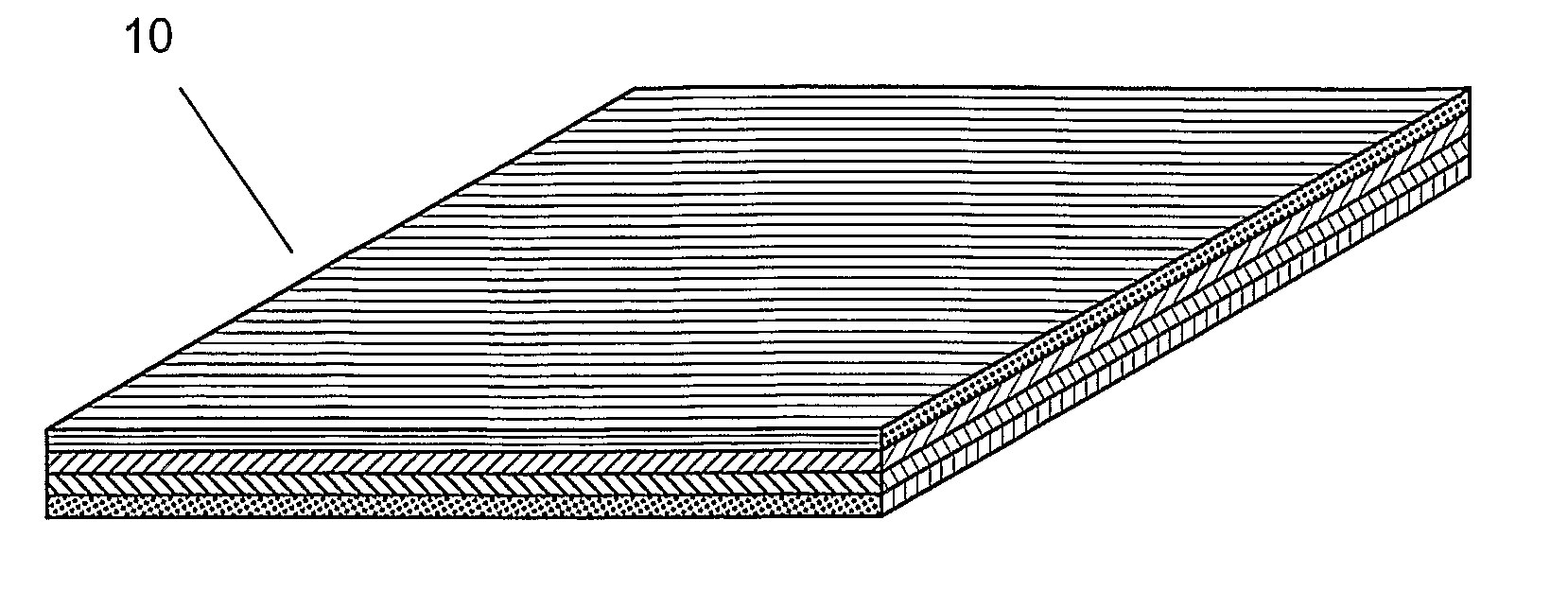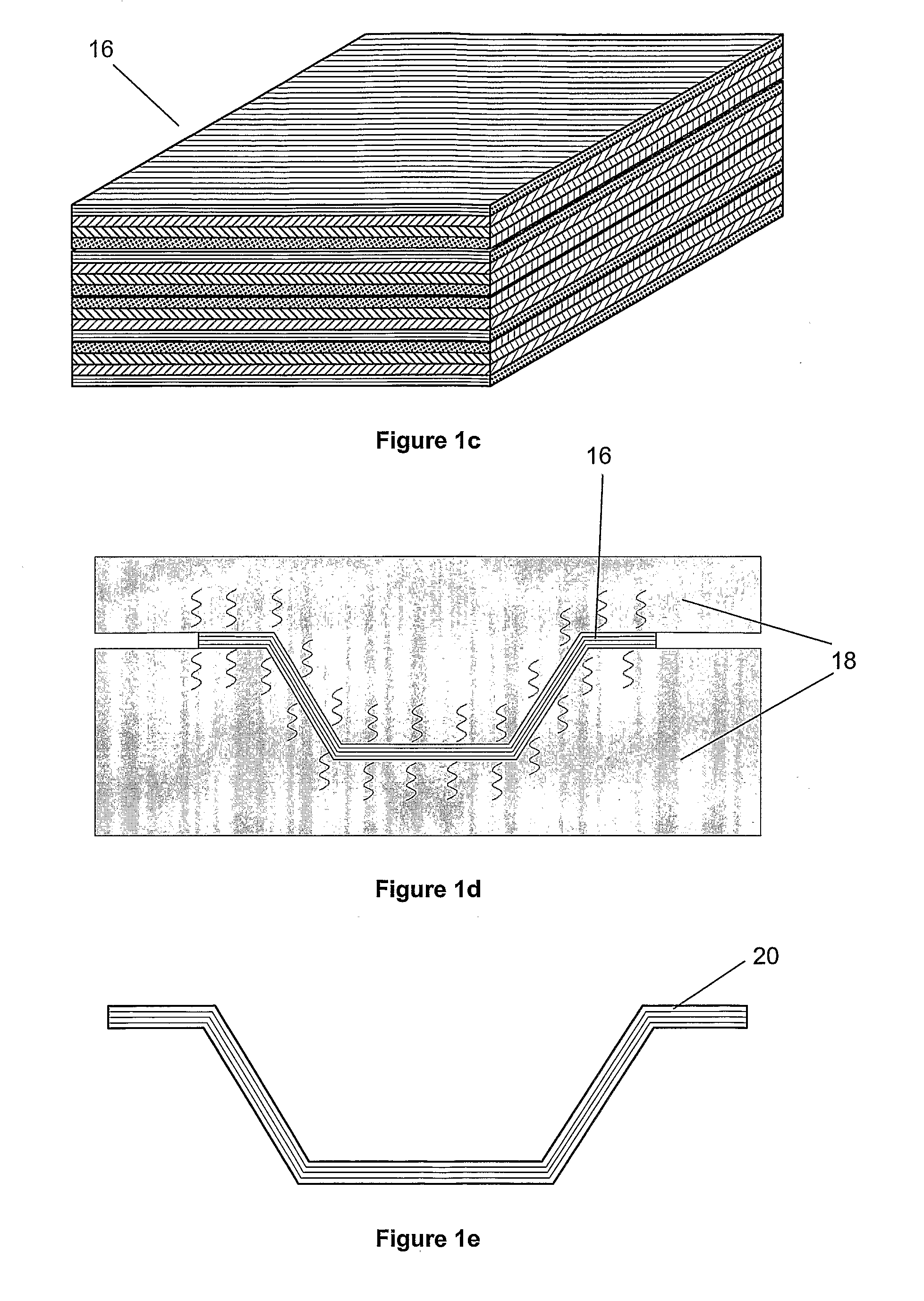Method of Binding Dry Reinforcement Fibres
a technology of dry reinforcement and fibres, applied in the direction of weaving, coating, layered products, etc., can solve the problems of poor mechanical properties, water in these threads can have detrimental effects on the polymer composite matrix, and weak interface between the binder,
- Summary
- Abstract
- Description
- Claims
- Application Information
AI Technical Summary
Benefits of technology
Problems solved by technology
Method used
Image
Examples
examples
Solution Compatibility of Semi-Crystalline Thermoplastic Polymer and Thermosetting Polymer
[0075]A carbon fibre reinforced epoxy composite panel, incorporating a film of thermoplastic on the surface, was manufactured using the resin transfer moulding (RTM) process. Two plies of Saertex SQ1090 and two plies of Saertex SQ1091 carbon fibre NCF were arranged in an RTM mould, with a 0.003″ film of PVDF placed underneath the fabric stack. PVDF was selected based on its known solution compatibility with epoxy resins. The mould was closed and infused with Hexcel RTM6 resin at 80° C. Subsequently, the mould was raised to 177° C., and held at that temperature for 2 hours. Following removal of the panel from the mould, a semi-interpenetrating polymer network was found between the PVDF and the cured RTM6. The relative concentration of fluorine atoms across the interface between the thermoplastic and cured epoxy resin was measured using Energy Dispersive X-Ray Spectroscopy. An apparent interdiffu...
PUM
| Property | Measurement | Unit |
|---|---|---|
| thickness | aaaaa | aaaaa |
| thickness | aaaaa | aaaaa |
| thickness | aaaaa | aaaaa |
Abstract
Description
Claims
Application Information
 Login to View More
Login to View More - R&D
- Intellectual Property
- Life Sciences
- Materials
- Tech Scout
- Unparalleled Data Quality
- Higher Quality Content
- 60% Fewer Hallucinations
Browse by: Latest US Patents, China's latest patents, Technical Efficacy Thesaurus, Application Domain, Technology Topic, Popular Technical Reports.
© 2025 PatSnap. All rights reserved.Legal|Privacy policy|Modern Slavery Act Transparency Statement|Sitemap|About US| Contact US: help@patsnap.com



